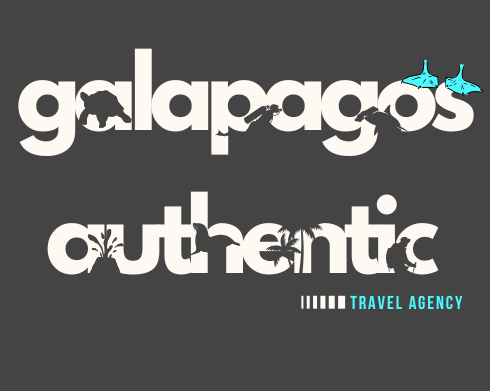DIVE SITES FROM SANTA CRUZ ISLAND
There are many different islands in the Galapagos and while we cannot visit every of them, we have a fantastic range of dive sites authorized by the Galapagos National Park that offer a wide range of marine wildlife for all different levels of divers: from beginners to professionals, and lovers of nudibranches to hammerhead shark fans. Enjoy the Galapagos dive sites in a daily tour or with our diving packages.
Almost every dive site can be dived by certified beginners and advanced divers. Only for Gordon Rocks you need to have a minimum of 20 dives and the last dive max. 5 months before.
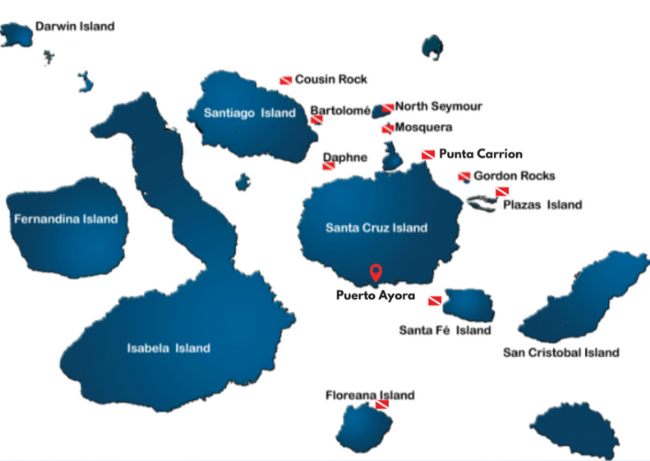
All dives sites mentioned in the map above can be visited within a daily tour. There are different combinations possible as well. Such as:
Bartolome & Cousins Rock
Seymour & Mosquera
Seymour & Daphne
Daphne & Mosquera
Gordon Rocks & Punta Carrion
Gordon Rocks & Plazas
Below you will find an overview of all dive sites mentioned in the map including the required level of experience, possibilty for snorkeling as well as the navigation time by boat. Please note that for the majority of daily tours starts from the Itabaca Canal which is in the North of the island. Therefore, you often have a taxi ride of 40min each way to reach the Itabaca Canal and to come back to Puerto Ayora again.
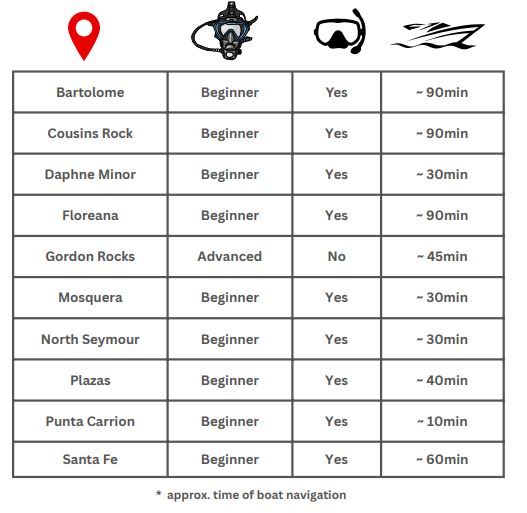
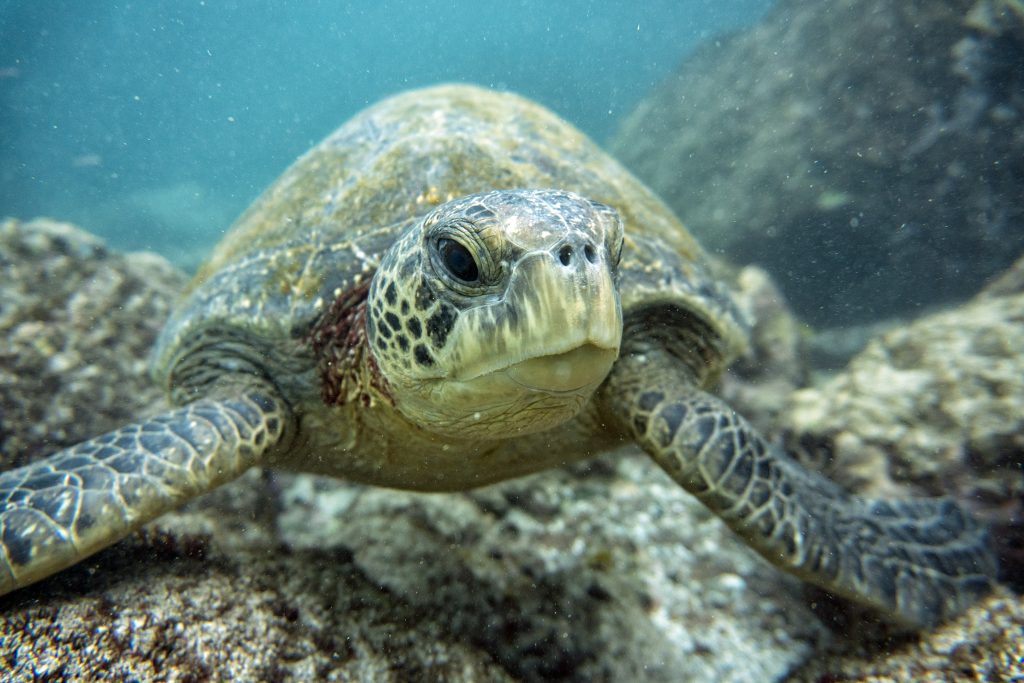
BARTOLOME
Located East of Santiago Island, this small island is known for its unique spear-like pinnacle. Beneath the waves you dive over, through and around a rocky platform and float along underwater cliffs that start at 15m and disappear into the sea bed giving us a good chance to see pelagic animals.
Bartolome can be combined with the following dive site: Cousins Rock.
Marine wildlife:
Sea horses, white-tip reed sharks, reef fish including large schools of hunting yellow tailed surgeon fish, barracudas, sea turtles, mobula rays, sting rays, scorpion stone fish, various invertebrates
General conditions: moderate current
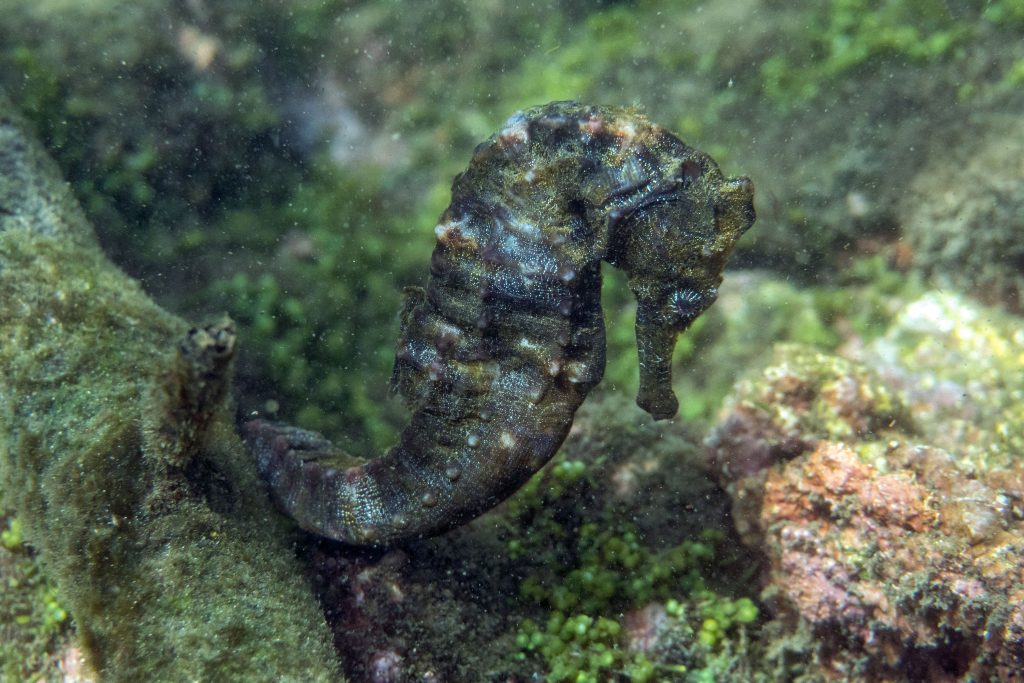
COUSINS ROCK
Located north-east of Santiago Island near Bartolome. This site has a unique and stunning topography of jagged rocky shelves in which animals, big & small, can be found resting and feeding. It is one of the few plaecs you can see endemic black coral in among the riot of colorful clams, algae, flora and fauna that cover the rocks like splashes of paint. During the surface interval, you can have a look for Galapagos penguins that inhabit the surrounding area.
Cousins Rock can be comined with Bartolome on the same day.
Marine wildlife:
Cleaning station, sea lions, Galapagos sharks, white tip reef sharks, sea turtles, sea horses, barracudas, sting rays, eagle rays, manta rays and reef fish including large schools of floating bullseye pufferfish
General conditions: mild to no current
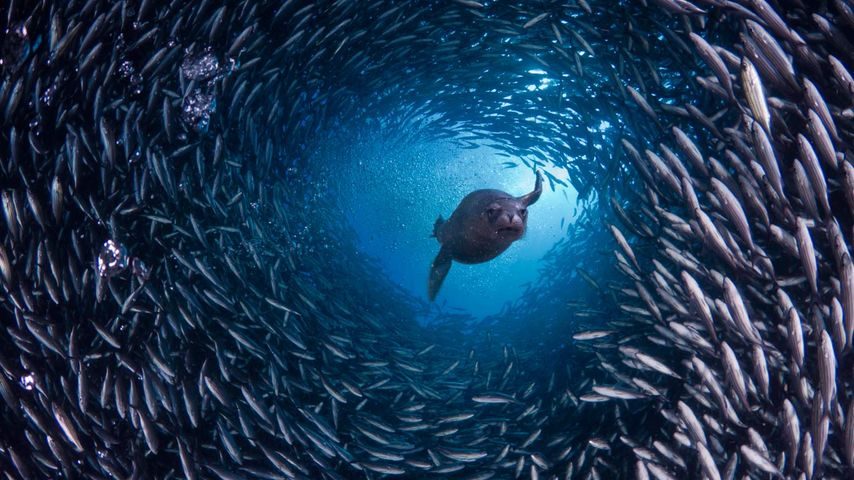
DAPHNE MINOR
Located North-West of Seymour North Island. This site offers a mixture of different topographies for diving: vertical walls, slopes, pinnacles, sea platform and even a small cave.
This dive site can be combined with Mosquera or North Seymour.
Marine wildlife:
Black striped salemas, hammerhead sharks, white tip & black tip reef sharks, a diversity of rays such as manta rays, sea turtles, reef fish, black coral walls, sea lions and a variety of invertebrates.
General conditions: mild to no current

FLOREANA
South of Santa Cruz Island, Floreana is the least populated island of the archipelago in terms of people. There are three different dive site options: Punta Cormorant, Champion and Enderby. All three offer a little something different including an occasional current that provides a thrilling drift dive opportunity.
Marine wildlife:
Look out for the endemic red lipped batfish and unique (and strange) Galapagos sea robin that has fins, wings and legs! Furthermore, there are also white tip reed sharks, sea turtles, sea lions, Galapagos sharks, hammerhead sharks, sting rays, eagle rays, marbeled rays, barracudas, reef fish and invertebrates like ocopus in amongst the reef.
General conditions: mild, ocasionally stronger current
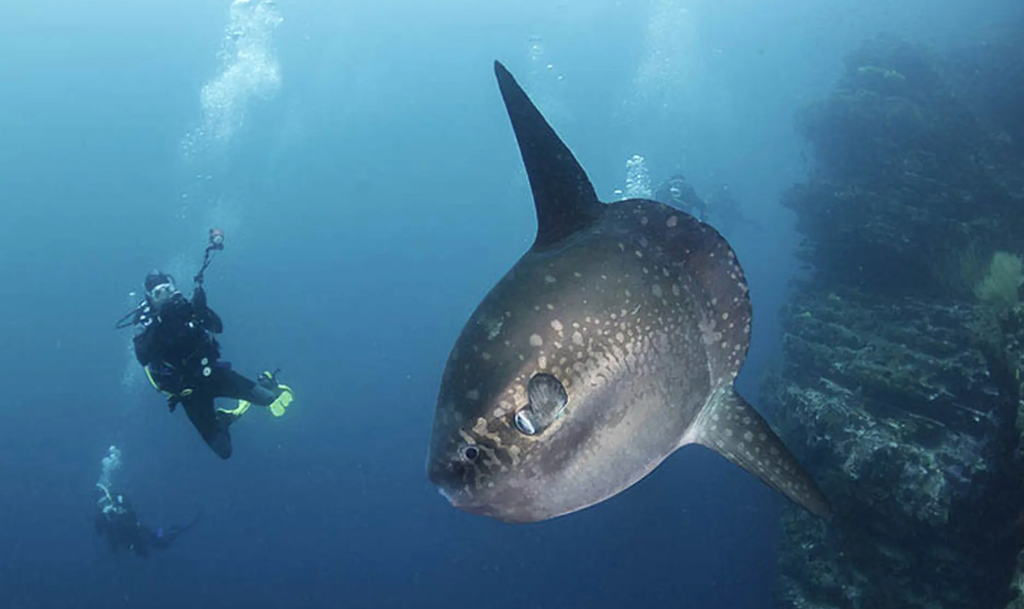
GORDON ROCKS
North-east of Santa Cruz Island you will find the famous Gordon Rocks, sometimes called: THE WASHING MACHINE. It is a popular site suitable for intermediate and advanced divers due to challenging currents and surge. These currents bring the plankton to the surface attracting large pelagics from across the sea in high numbers.
You can either do 2 dives at Gordon Rocks or combine it with Punta Carrion or Plaza.
Marine wildlife:
One of the best places to find hammerhead sharks and the weird and wonderful oceanic sunfish (Mola Mola). Also at this dive site you can find Galapagos sharks, white tip as well as black tip reef sharks, lots of sea turtles, mobula rays, sting rays, eagle rays, golden rays, panamic green morays, Galapagos eels, barracudas and various reef fish.
General conditions: moderate to strong current & surge
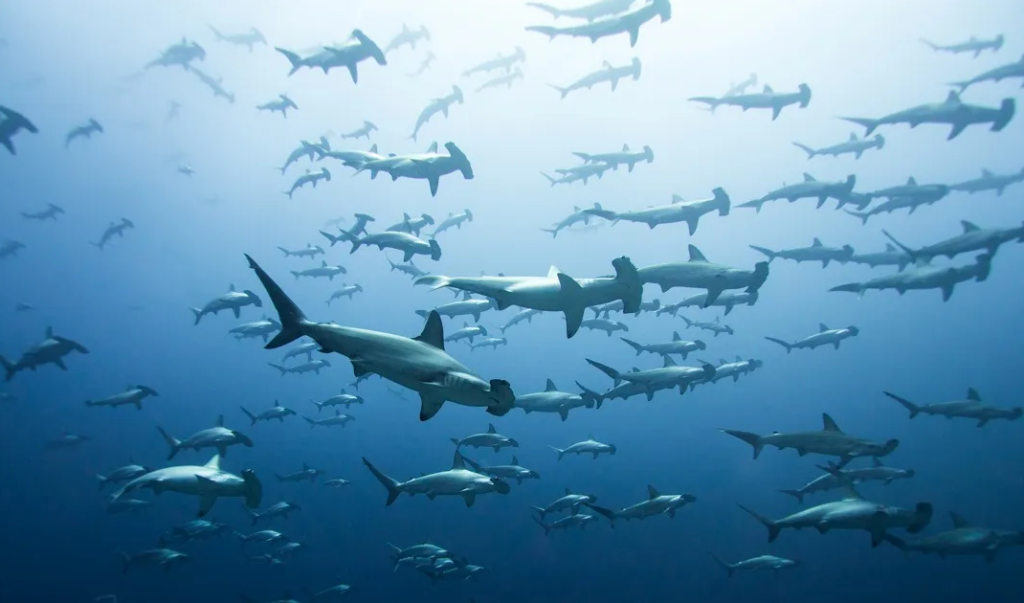
MOSQUERA
Located north of Santa Cruz Island Mosquera is an islet that emerges from the sea between Seymour and Baltra Island. A sandy bottom at 15-18m is scattered with curious Garden eels and pelagic species as well as an underwater wall flowing downwards from the shallow into the deep. Diving along the platform or above sandy patches Mosquera offers a high variety of different marine wildlife.
It can be combined with Daphne Minor or North Seymour.
Marine wildlife:
Keep an eye out for hammerhead sharks and the endemic Galapagos garden eels that pop their heads out of the ground and disappear down their burrow as you approach! Also found in the area are Galapagos sharks, black tip as well as white tip reef sharks, sea lions, sea turtles, barracudas, sting rays, eagle rays, mobula rays, manta rays, mola molas and a variety of reef fish and invertebrates.
General conditions: mild to no current
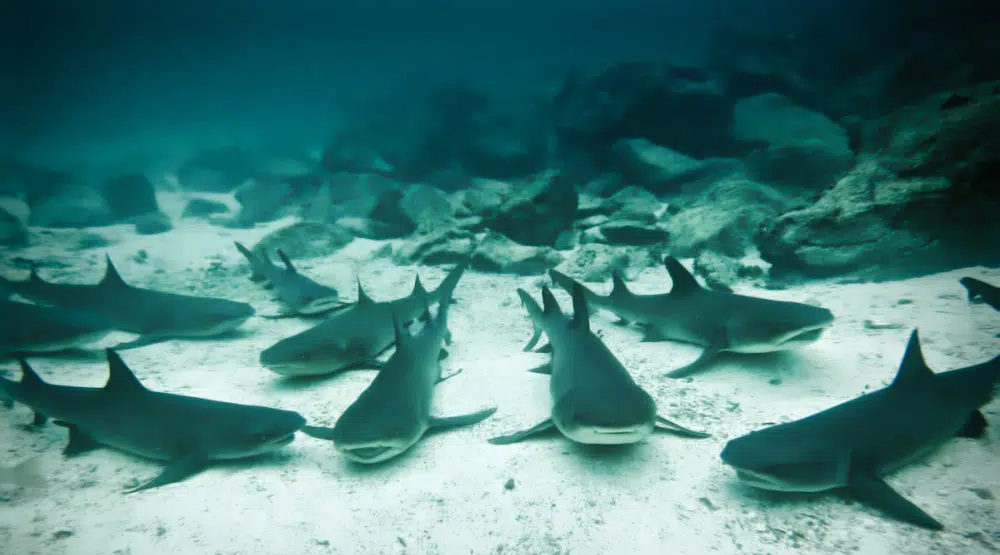
NORTH SEYMOUR
Located North-West of Santa Cruz Island. The topography consists of gradual steps descending from the island shoreline, declining 8m to a beautiful rocky reef before reaching the sandy bottom at 16-18m. Seymour is a good place for beginners and experienced divers alike. Though the currents can be moderate to strong on occasion, it is on the whole suitable for people with limited experience. The area is known for its drift diving as well.
North Seymour can be combined with Mosquera and Daphne Minor.
Marine wildlife:
Different types of sharks love to stop here for cleaning. You may be able to spot hammerhead sharks surrounded by busy reef fish, sea turtles, sting rays, eagle rays, mobula rays, Galapagos garden eels and barracudas.
General conditions: mild to moderate current
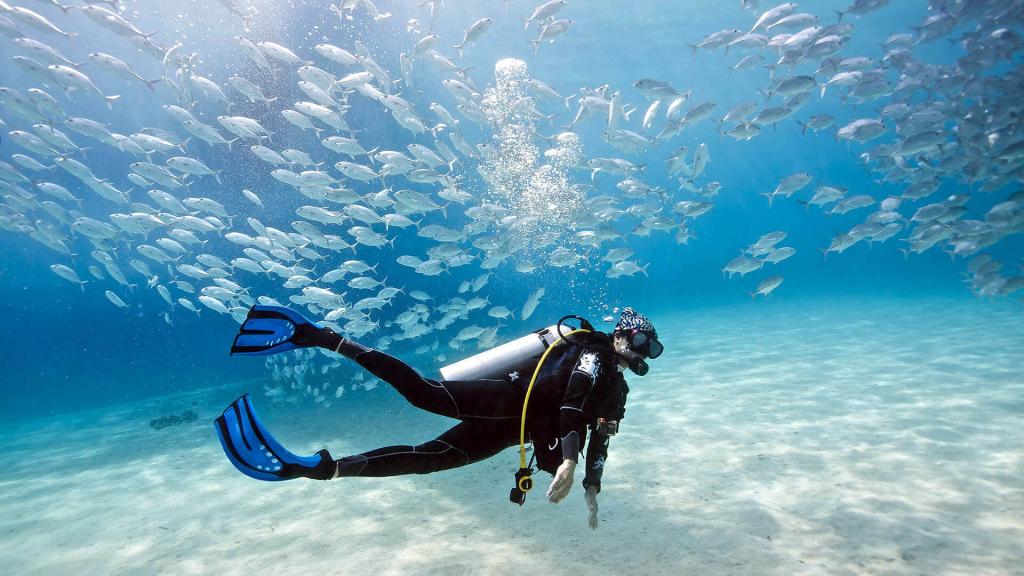
PLAZA
Located in the East of Santa Cruz Island it is made ip of two islets: South Plaza and North Plaza. These spots are known for having land iguanas, hybrid marine iguanas, Blue footed boobies, Nazca boobies, frigatebirds, swallow-tailed gulls as well as lots of sea lions. Normally there are no strong currents. Marine wildlife offers you a variety of different animals and it is easy to dive.
This dive site can be combined with Gordon Rocks and Punta Carrion.
Marine wildlife:
This dive site offers you a variety of different marine wildlife. Chances to observe sea turtles, sea lions, white tip and black tip reef sharks, rays as well as reef fish.
General conditions: mild to moderate current
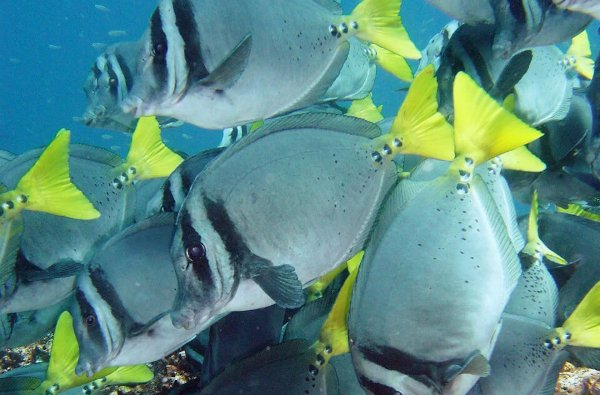
PUNTA CARRION
This site is located at the eastern end of the Itabaca Canal. Like much of the diving in Galapagos you will be in a rocky reef where you can see the smaller sea life but with a fantastic view into the blue to have a look for larger pelagics.
Punta Carrion can be combined with Gordon Rocks, Plaza, Seymour, Mosquera, Daphne Minor and is also suitable for Night Diving.
Marine wildlife:
Sea lions, white and black tip reef sharks, sea turtles, barracudas, rays and a variety of reef fish and invertebrates.
General conditions: mild to no current
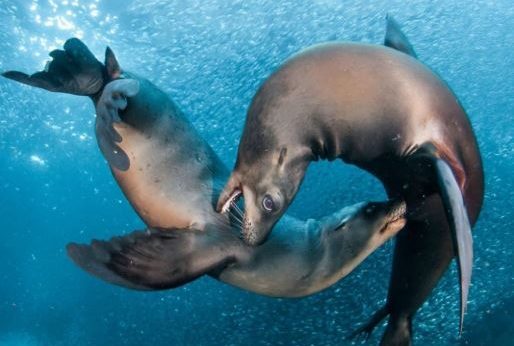
SANTA FE
In the South of Santa Cruz lies Santa Fe Island, 45min navigation from Puerto Ayora. This site is well known for being one of the easiest dives in Galapagos, but its simplicity does not take anything away from its beauty. The swim through at 16m makes this a fascinating site for both, beginners and experienced divers.
Marine wildlife:
Sea lions, sea turtles, white tip reef sharks, rays, black tip reef sharks, hammerhead sharks and large schools of sih are abundant.
General conditions: mild to no current
